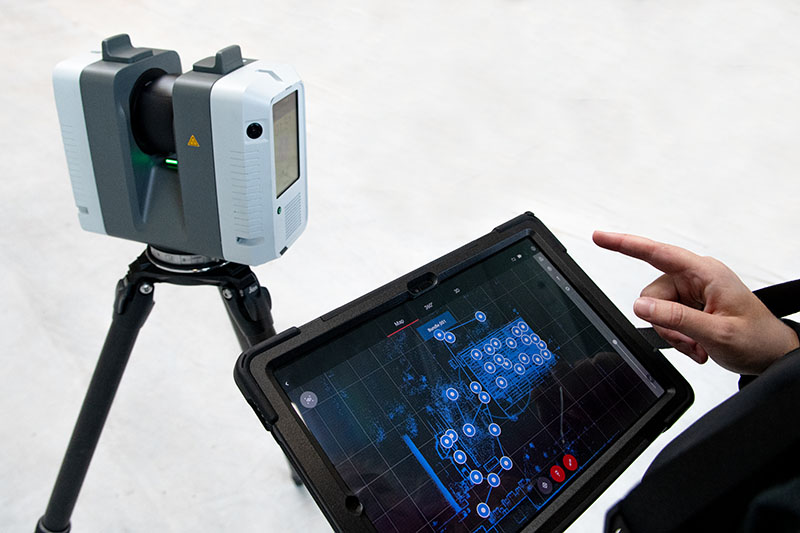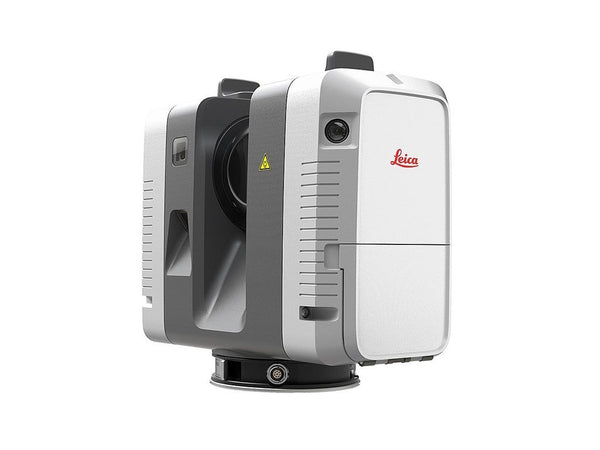Top Reasons to Adopt 3D Scanning for Construction
Wiki Article
Enhancing Production Processes: The Influence of 3D Laser Scanning on Quality Assurance
3D laser scanning modern technology is transforming quality assurance in production. By offering high-resolution information and precise dimensions, it allows producers to recognize deviations from specifications easily. This improvement not only streamlines assessment procedures yet additionally boosts operational efficiency. 3D Scanning. The execution of this technology comes with its very own set of challenges. Discovering these aspects discloses the more comprehensive ramifications for industries and the future landscape of manufacturingComprehending 3D Laser Scanning Innovation
Although 3D laser scanning modern technology has actually developed substantially in current years, its essential concept stays straightforward: catching the exact geometry of items utilizing laser beams. This modern technology uses laser light to measure distances in between the scanner and various points on a things's surface. The information collected is after that refined to create an in-depth 3D model, precisely mirroring the dimensions and shapes of the scanned object.Normally, 3D laser scanners can be classified into 2 major types: call and non-contact scanners. Contact scanners physically touch the challenge gather measurements, whereas non-contact scanners make use of laser light beams to catch data from a range. The versatility of this innovation allows its application throughout various sectors, including production, style, and building. Its capacity to produce high-resolution versions assists in high quality control, reverse design, and rapid prototyping, eventually improving style accuracy and effectiveness in manufacturing processes.
Benefits of 3D Laser Scanning in Manufacturing
As manufacturers look for to improve effectiveness and precision in their processes, the advantages of 3D laser scanning have actually become significantly apparent. This cutting-edge modern technology permits highly precise and fast measurements of intricate geometries, significantly lowering the time needed for high quality checks. By recording detailed information, makers can identify disparities early in the production procedure, thus reducing waste and revamp costs.In addition, 3D laser scanning helps with much better style validation, making it possible for designers to contrast as-built problems with original requirements. This capability guarantees that any variances are quickly dealt with, boosting total item high quality. Furthermore, the modern technology supports the production of digital twins, which can be used for simulations and process optimizations. Because of this, producers not just raise their functional effectiveness but also improve their competitive benefit out there. On the whole, the integration of 3D laser scanning represents a transformative step toward attaining higher standards in producing top quality control.
Assimilation of 3D Laser Scanning Into Quality Assurance
Incorporating 3D laser scanning into quality assurance processes improves the precision and performance of assessments throughout manufacturing. This innovation enables suppliers to record in-depth, high-resolution data of elements and assemblies, enabling accurate measurements and comparisons against design specs. By using 3D laser scanning, companies can identify variances from tolerances better, which is essential for maintaining product stability.
Real-World Applications and Case Studies
Real-world applications of 3D laser scanning in making demonstrate its transformative effect throughout various markets. For instance, aerospace companies utilize this modern technology to carry out accurate examinations of elements, ensuring they fulfill strict security criteria. A noteworthy situation included a leading aircraft producer that utilized 3D laser scanning to improve its top quality control processes, considerably reducing assessment times and errors.In the vehicle sector, manufacturers have actually implemented laser scanning to produce electronic twins of their cars, allowing real-time modifications throughout manufacturing. One automotive firm reported a 30% decrease in rework costs after integrating this modern technology right into their production line.
In the customer goods market, companies are making use of 3D laser scanning for quick prototyping, allowing for quicker versions and enhanced product styles. These applications highlight exactly how 3D laser scanning not just improves precision however likewise enhances effectiveness and development across numerous production domains.
Getting Rid Of Obstacles in Implementation
Carrying out 3D laser scanning in making presents a number of difficulties that organizations have to navigate to totally realize its benefits. One significant obstacle is the initial expense of equipment and software, which can hinder firms from embracing this modern technology. Furthermore, integrating 3D laser scanning right into existing workflows calls for getting over resistance to alter among staff members, necessitating complete training programs to guarantee effectiveness. Data administration also poses a difficulty, as the high quantity of info produced by 3D scanning need to be properly refined and analyzed to obtain workable understandings. Additionally, compatibility concerns with heritage systems may hinder smooth integration, requiring prospective upgrades or modifications. Resolving these difficulties is vital for suppliers intending to enhance quality control and maximize production processes. By establishing clear techniques for training, investment, and information management, firms can minimize these challenges and release the transformative potential of 3D laser scanning in their operations.Future Trends in 3D Laser Scanning for Manufacturing
As making remains to evolve, the combination of 3D laser scanning with increased automation is anticipated to change production processes. Improved data analytics will certainly play an important role in enhancing and optimizing workflows high quality control. These trends highlight the possibility for higher performance and precision visit here in making settings.
Raised Automation Combination
Although the combination of automation in production has actually been progressive, the future of 3D laser scanning is positioned to increase this pattern significantly. As making procedures become significantly intricate, the need for exact, real-time measurements expands. 3D laser scanning technology offers automated information capture, reducing labor expenses and decreasing human error. This assimilation allows manufacturers to enhance quality assurance procedures, making it possible for quick detection of variances in you could try this out manufacturing. In addition, the alignment of 3D laser scanning with robotics and automated systems helps with seamless operations, enhancing overall performance. As manufacturers adopt these advanced innovations, they can anticipate improved precision and productivity, placing themselves competitively in a quickly evolving market. The harmony in between automation and 3D laser scanning marks a substantial leap ahead in making advancement.Boosted Information Analytics
The integration of automation has actually led the method for advancements in information analytics within the domain name of 3D laser scanning. Suppliers are progressively leveraging innovative algorithms and artificial intelligence strategies to examine substantial datasets created by laser scans. This improved data analytics capacity enables real-time tracking of making processes, allowing the recognition of problems and discrepancies more properly than standard techniques. Anticipating analytics can predict possible problems, considerably decreasing downtime and improving overall effectiveness. The capability to envision information in 3 measurements offers much deeper understandings into production process, cultivating better decision-making. As 3D laser scanning technology proceeds to evolve, the function of information analytics will end up being increasingly crucial in driving innovation and preserving affordable benefit in manufacturing.Frequently Asked Questions
What Industries Benefit one of the most From 3D Laser Scanning?
The markets that profit most from 3D laser scanning include production, construction, aerospace, automobile, and medical care. These fields utilize the technology for precision measurements, quality control, and reliable design procedures, substantially boosting total operational performance.Just How Does 3D Laser Scanning Compare to Standard Dimension Techniques?
3D laser scanning offers greater precision and rate contrasted to typical dimension methods. It records thorough geometries quickly, reducing human mistake and facilitating far better analysis, which ultimately improves total top quality control in different sectors.What Is the Price of Applying 3D Laser Scanning Modern Technology?
The price of executing 3D laser scanning innovation differs substantially, commonly ranging from $10,000 to $100,000, depending on software, tools, and training. Organizations should weigh these expenses against prospective effectiveness and top quality renovations.Are There Details Software Program Requirements for 3D Laser Scanning?
Yes, 3D laser scanning needs try these out certain software, including data handling and modeling applications. Typical options incorporate CAD software application, factor cloud handling devices, and specialized applications that promote the integration and evaluation of scanned information for optimal outcomes.For how long Does a Typical 3D Laser Scanning Refine Take?
A typical 3D laser scanning process can take anywhere from a few minutes to a number of hours, relying on variables like the dimension of the things, complexity of the environment, and called for level of information for accuracy.3D laser scanning modern technology is changing high quality control in production. 3D laser scanning modern technology has actually developed significantly in current years, its essential principle remains simple: catching the specific geometry of objects utilizing laser beam of lights. Incorporating 3D laser scanning into high quality control procedures boosts the precision and efficiency of inspections throughout manufacturing (3D Scanning). 3D laser scanning innovation uses automated information capture, reducing labor costs and minimizing human mistake. The price of applying 3D laser scanning modern technology differs considerably, normally varying from $10,000 to $100,000, depending on software program, training, and devices
Report this wiki page